Mention the word terrarium to a bunch of reptile keepers and they’ll likely envision a rainforest-style enclosure.
But rainforests aren’t the only type of habitat you can mimic while making a terrarium. In fact, you can create a terrarium that resembles any type of habitat imaginable. But today, we’re going to talk about terrariums that mimic desert-like habitats.
For a variety of reasons, I really enjoy constructing desert-style habitats. They look fantastic, they’re fun to build and they’re suitable for a variety of interesting and beautiful reptiles. But my favorite reason to build desert terraria is quite simple: They’re very easy to set up.
You don’t have to take my word for it – just build your own desert terrarium and see for yourself.
We’ll tell you exactly how to do so below. We’ll talk about the best enclosures to use, discuss the right type of heating and lighting to include and break down the different types of substrates and furniture to install. We’ll even talk about the species best suited for these types of habitats.
Enclosure Selection
As when constructing any type of vivaria, you’ll want to begin by selecting a suitable enclosure. There are a number of different enclosure types from which you can choose. However, most keepers elect to use glass aquariums, commercially manufactured enclosures or custom-built cages.
None of these three options are inherently better than the others; they all present different benefits and drawbacks. We’ll discuss the pros and cons of these enclosure types below.
Glass Aquaria
Glass aquaria have long been (and continue to be) some of the most popular enclosures used by reptile keepers. Glass aquaria provide excellent viewing opportunities, they’re readily available and they’re pretty affordable too. They also stand up to moisture well, but this isn’t important for most desert habitats.
However, glass aquaria also present a number of drawbacks. First of all, they’re fragile, so they break easily. They’re also quite heavy for their size. But it is the layout of aquaria that presents the most significant challenge for reptile keepers.
Aquaria are designed for fish. And unlike fish, which live a pretty two-dimensional lifestyle, most lizards and snakes want a habitat that allows them to move in all three dimensions. This means you’ll either need to purchase a very large aquarium or one that comes in reptile-friendly dimensions.
Commercial Enclosures
Commercially manufactured reptile enclosures are almost always the best option for terrarium construction. Commercial enclosures usually feature dimensions that are appropriate for reptiles and they’re usually quite light. They also feature a variety of helpful features, including front-opening doors, built-in light shrouds and litter dams.
However, commercial enclosures are not perfect either. They’re typically the most expensive option available, and they rarely provide the visibility that aquaria do. Additionally, it is often necessary to have commercial enclosures shipped to your home; they’re rarely available from retail shops. This will increase the cost of the habitat significantly.
Custom-Built Habitats: The DIY Option
Some hobbyists prefer to forego commercial options and decide to build their own terrarium instead. This approach allows you to employ the dimensions that’ll best suit your pet. It also allows you to keep the weight relatively low by using lightweight materials. You can even ensure that it is easy to see your pets by incorporating plenty of glass or plastic panels.
However, custom-built enclosures aren’t right for everyone. You’ll have to have the necessary tools to build the habitat, as well as the skill and time to devote to the task. You may even find it necessary to “go back to the drawing board” several times to correct mistakes.
In fact, it is probably wise for fledgling keepers to avoid building their own habitats until they’ve accumulated a bit of experience. This will help to alleviate many of the mistakes that novice cage builders are likely to make. However, those who build their own habitats will usually find that they cost less than commercial enclosures.
Heating and Lighting
Although not all deserts are hot (Antarctica is a desert), those that harbor reptiles usually are. They’re also quite bright, as the sun’s rays are often very strong in these habitats. You’ll need to recreate these conditions in your terrarium to provide your animals with the proper living conditions.
Proper light is the more complicated of the two resources to provide, so we’ll start there. Also, your lighting decisions will affect your choice of heating devices.
Lighting the Habitat
Most diurnal lizards require access to full-spectrum light (snakes do not appear to need special lighting). In fact, they not only require visible light, but they need light in the UVA and UVB portions of the spectrum too. UVA wavelengths help reptiles to recognize food and they provide psychological benefits. UVB wavelengths, by contrast, help lizards to properly metabolize the calcium in their diets, through the production of Vitamin D3.
You’ll need special light bulbs that are capable of providing UV wavelengths to provide the right kind of lighting. Most retailers offer several different options, but fluorescent fixtures and mercury vapor bulbs are usually the most popular choices.
Understand that fluorescent lights do not provide very much heat. So, you’ll have to use them in conjunction with heat lamps to provide the right environmental conditions. Mercury vapor bulbs, on the other hand, produce a lot of heat. This means that they can be used as an all-in-one heating and lighting solution.
Note that full spectrum lights produce varying amounts of UVB light. Desert-dwelling reptiles will usually fare best when provided with lights that provide a high percentage of UVB light. This typically means selecting bulbs that provide 7% of their output in the UVB portion of the spectrum.
In addition to providing the proper light spectrum, you must also provide your animals with sufficient light intensity. Unfortunately, there’s been little research conducted on the light intensity needs of captive reptiles. So, it is impossible to know the precise number of lumens a given animal requires.
However, you are unlikely to create a brighter terrarium than desert-dwelling herps are accustomed to in the wild, so it is generally advisable to bathe the habitat in as much light as is reasonably possible. Just be sure to account for any excess heat produced by the lights. Also, be sure to give your pets plenty of shaded places to escape the light if they wish.
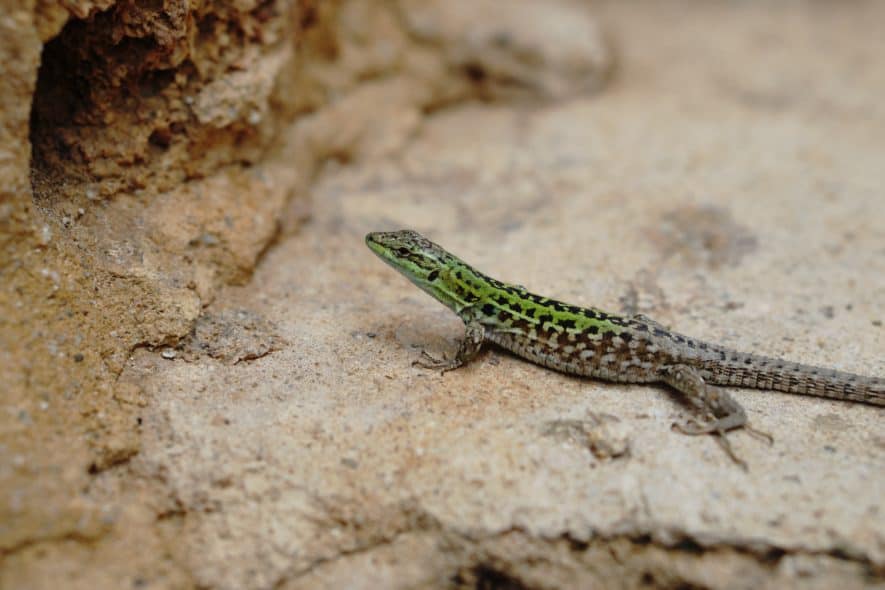
Heating the Habitat
If you are using fluorescent lights for your pet’s habitat, you’ll need to install supplemental heating sources. Heating pads and cables can be used for this purpose, but most desert-dwelling herps are better heated from above, via lights or radiant heat panels.
In either case, you’ll want to cluster the heating devices at one end of the habitat. This will provide a range (or gradient) of temperatures. By establishing this type of gradient, your pet will be able to move around to find a comfortable temperature. The area directly under the heating devices will serve as a basking spot, while the far end of the enclosure will provide a relatively cool retreat for your animals.
Different species will require different temperatures, so you’ll need to research your pet’s specific needs. However, most desert-dwelling herps prefer ambient temperatures in the mid-80s and basking temperatures between 95 and 105 degrees Fahrenheit. Always be sure to use a thermometer to monitor the temperatures – never guess.
Desert Terrarium Substrates
Substrate selection is an important factor in any terrarium, and this includes desert-style habitats. Your pets will have a lot of contact with the substrate and the type you choose will have a number of husbandry implications.
Note that while most people envision deserts as sand-dune-covered areas, few reptiles live in these places. Most desert-dwelling herps actually live in areas characterized by hard-packed substrates and rock.
Some of the best substrates to use for a desert terrarium include:
- Commercially Produced Reptile Sand – Many manufacturers produce sands that are either comprised of smooth or edible grains. This helps to prevent the impaction problems that occasionally affect reptiles kept on other types of sand. Many of these commercial products are quite nice and look great (some even come in several different colors). However, they’re often expensive.
- Play Sand – Play sand – such as the type used to fill children’s sandboxes – is an acceptable choice for most medium to large reptiles. Play sand if quite cheap, but you’ll want to sift it before adding it to your habitat. This will help you get rid of any large or sharp grains.
- Beach Sand – You can also collect your own sand if you like. Doing so will obviously be cheaper than purchasing sand from a retailer, but you’ll spend a lot of time collecting and sifting it. Just make sure that it is legal to collect the sand in your location before you begin.
- Clay – Clay collected from your backyard can make an excellent substrate, particularly if you pack it down firmly. Clay is less likely to cause impaction issues (the grains are smaller than those of sand) and it is generally free. However, it may stain anything it touches, including your clothing or carpet. It may even stain your pet’s skin.
Some keepers may also like to incorporate gravel into their desert vivarium. This can provide visual interest, but it is wise to use relatively large gravel to prevent your animals from swallowing the rocks.
Furniture & Decoration
Now that you have a heated and lit enclosure filled with a suitable substrate, it is time to begin adding furniture and props to the habitat. This is an important step, and the furniture provided will help make the habitat comfortable for your pets.
Different species will require different types of cage furniture, so you must choose the best options for your circumstances. For example:
- Most desert-dwelling reptiles will appreciate having one or more smooth, flat rocks placed under the basking spot. This will give them a comfortable place to lay during the day, and it will radiate heat at night, once the lights are off.
- Although deserts obviously don’t have many trees, some critters in these habitats like climbing any elevated perch they can find. You can use pieces of driftwood, manzanita branches, sandblasted grapevine or other types of wood to provide perches for your pets.
- Like most other herps, your desert lizard or snake will require at least one hiding spot. You can use pieces of corkbark to create hides, but most keepers will prefer constructing crevices and recesses from real rocks. Just be sure the rocks are securely attached to each other to prevent collapses.
It is also a good idea to provide your pets with at least one hiding spot that is designed to stay somewhat damp.
This will help prevent dehydration (even reptiles that live in the desert can become dehydrated), as your pets will absorb water via their lungs while they’re hanging out inside. They may even absorb water through their skin or cloaca while resting in a damp hiding spot.
Damp hiding places are especially important for small animals, whose surface-to-volume ratios are higher than those of larger animals. This means they’ll usually lose water more quickly to the environment than larger animals will.
Desert Terrarium Backgrounds
Your animals will not care what the habitat looks like. However, most keepers want their terraria to resemble a true desert. Cage furniture will provide some visual appeal, but terrarium backgrounds can also spice up the habitat.
Backgrounds needn’t be complicated: You can simply attach a photograph of a desert scene to the back wall of the enclosure. However, three-dimensional backgrounds – such as faux rock walls or cliffs – can take your vivarium to another level.
You can make rock backgrounds from real stones; just cement them together with a reptile-safe adhesive or grout. You can also carve a rock wall out of foam and then cover it with silicone and sand to make it look realistic. Just be sure to avoid using any toxic materials and ensure all heavy items are securely fixed in place. You don’t want a big rock to fall on your pet.
Desert Terrarium Plants
Deserts are often relatively inhospitable habitats, but a number of hardy plants live in these harsh lands. And while live plants aren’t necessary for your desert terrarium, they can help make it more aesthetically pleasing. Some of the plants used in desert terrariums may even provide benefits to your animals.
Most people picture cacti when thinking about desert plants. However, there are a number of different plants that call the desert home. In fact, it is important to think twice before incorporating cacti in a vivarium. Many species have very sharp thorns that could injure you or your pet.
Some of the best plants for reptile terraria include:
- Albuca circinata
- Aloe vera
- Ceraria pygmaea
- Conophytum bilobum
- Echeveria elegans
- Echeveria laui
- Euphorbia symmetrica
- Gasteria glomerata
- Haworthia nigra
- Haworthia poellnitziana
- Haworthia cooperi truncate
- Haworthia retusa suberecta
- Massonia pustulata
- Sansevieria
- Sempervivum
- Senecio citriformis
- Tylecodon grandifolia
- Tylecodon paniculatus
Of course, there are hundreds of other species that will work for a desert terrarium, so feel free to experiment. Just make sure that you do not include toxic plants in habitats with herbivores or omnivores.
Note that you’ll generally want to keep desert plants in their own pot, rather than burying them in the substrate. Just use rocks, pieces of wood or other items to camouflage the pots and maintain a natural aesthetic.
Water
Even desert-dwelling reptiles require liquid water to survive – all animals do. Some species can satisfy their need for water by eating, but others must drink water to remain hydrated. You’ll have to research your animal’s typical hydration strategy to determine the best way to provide water.
For example, desert-dwelling tortoises usually obtain most of their water from the succulent plants they consume. They may drink from a water dish when offered, but they’ll usually thrive with little more than the moisture present in their food.
Meanwhile, many lizards and snakes try to catch dew drops on their body, which they’ll then collect and drink. Some species have even evolved physiological or behavioral adaptations to help facilitate this practice. Still, other lizards and snakes prefer to drink rainwater off their bodies. Bearded dragons, for example, will usually drink in this manner. The best way to offer water to these types of reptiles is by periodically misting the habitat and animal.
Other desert-dwelling reptiles prefer to drink from water dishes. This includes many of the desert-dwelling, as well as a few lizard species. You will have to use care when including a water dish in your pet’s habitat though – you don’t want to increase the humidity too much.
To avoid this problem, you can simply provide water periodically (perhaps two or three times per week), rather than leaving a water dish in the terrarium at all times. This will also help prevent spills, which can quickly raise the humidity level.
Animal Selection: Good Candidates for Desert Vivariums
As when setting up any terrarium, you must select suitable animals to inhabit your desert terrarium. They must be comfortable living in a warm, bright and dry enclosure, so you’ll usually want to pick species that live in arid habitats in the wild.
Some of the best candidates for life in a desert-style terrarium include:
- Bearded dragons (Pogona vitticeps)
- Leopard geckos (Eublepharis macularius)
- Kenyan sand boas (Eryx colubrinus)
- Indian sand boas (Eryx johnii)
- Western banded gecko (Coleonyx variegatus)
- Javelin sand boas (Eryx jaculus)
- Collared lizards (Crotaphytus collaris)
- Desert iguanas (Dipsosaurus dorsalis)
- Mali uromastyx (Uromasytx maliensis)
- Ornate uromastyx (Uromastyx ornata)
- Saharan uromastyx (Uromastyx geyri)
- Egyptian uromastyx (Uromastyx aegyptia)
- Common chuckwallas (Sauromalus ater)
- Rosy boa (Charina trivirgata)
- Sandfish (Scincus scincus)
- Mojave fringe-toed lizard (Uma scoparia)
- Berber skink (Eumeces schneideri)
- Desert horned lizard (Phrynosoma platyrhinos)
There are obviously many other reptiles that will work in desert terraria, these are a few of the most commonly kept.
Note that we didn’t include any tortoises on the list. For the most part, tortoises require too much space to be appropriate for naturalistic vivaria. However, there are a few tortoises that may be small enough to work in an indoor terrarium. Speckled padloper tortoises (Homopus signatus), for example, may be good candidates for vivarium life.
Note that while many of the animals listed above live in arid habitats, they don’t all inhabit true deserts. Leopard geckos, for example, live in a variety of arid habitats in southwest Asia. So, while they are adapted to dry, hot landscapes, they also require access to small areas with high relative humidity. On the other hand, sand boas and sandfish inhabit dune-covered deserts and live amid a sea of sand.
The takeaway: Always keep your animal’s specific needs in mind when setting up your terrarium.
Now It’s Your Turn
We hope that this guide has given you the information and confidence necessary to try building your own desert terrarium. Just be sure to embrace the concepts detailed above and take your time when setting up the habitat.
But as when setting up any vivarium, you should feel free to experiment. Always keep your pet’s needs and quality of life in mind, but feel free to try out different strategies and techniques. Vivaria design is an evolving art form, and innovation is important – most standard vivaria-design techniques started as little more than a keeper’s idea.
Let us know how your desert terrarium project goes in the comments below. We’d love to hear about your successes (and inevitable failures) and creative ideas – they may even inspire other readers.
And don’t forget to share this article with your friends if you found it helpful!

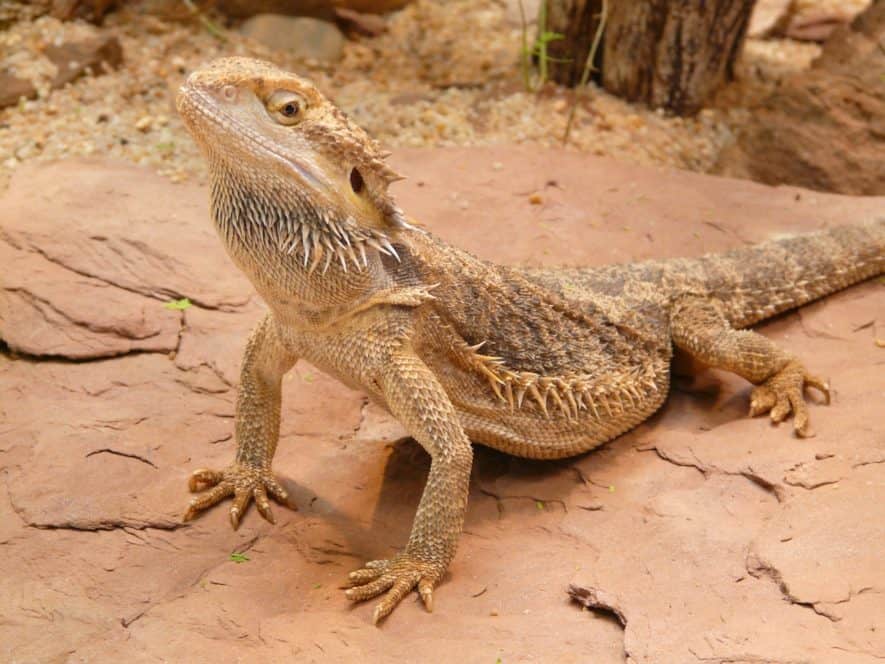
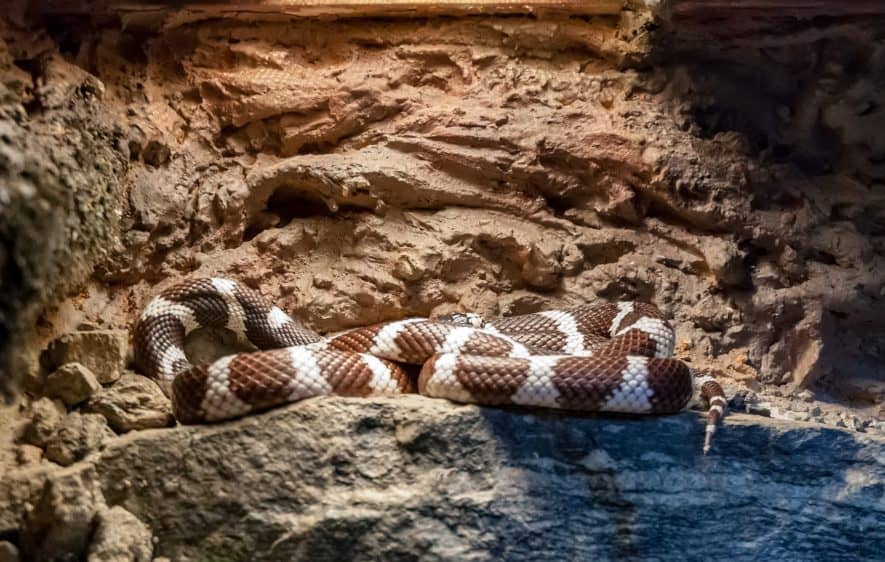
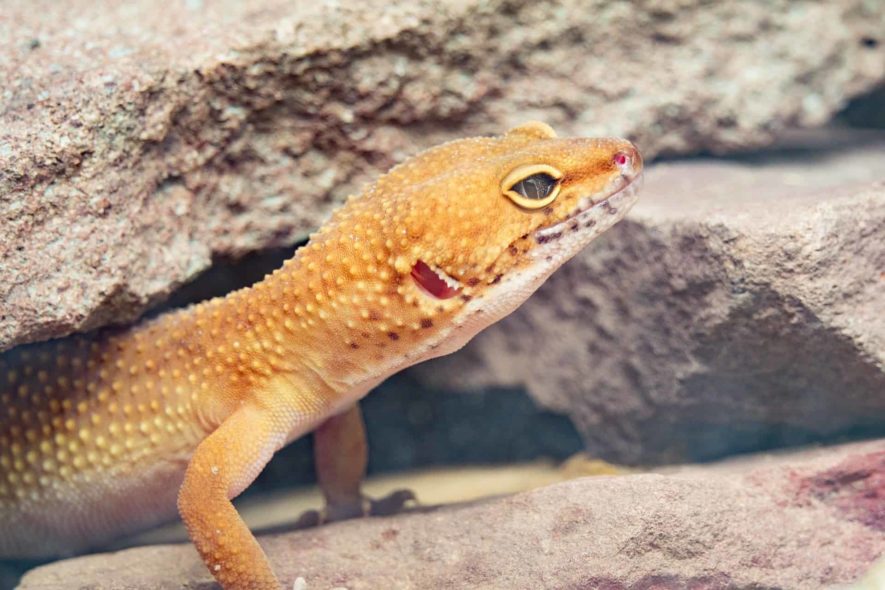
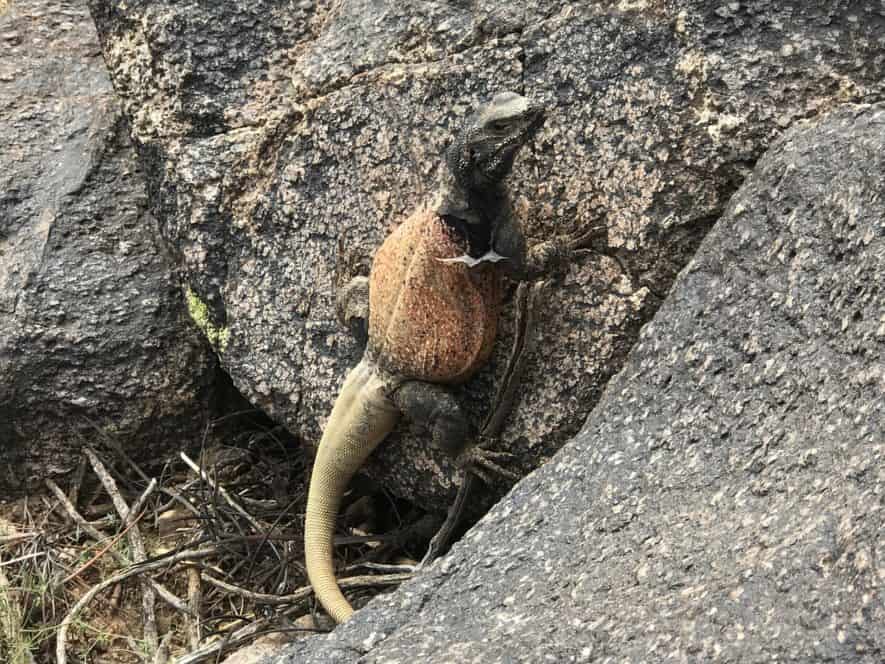
5 Comments
Great article. I’m building a 90g desert vivarium. Can I cohabit more than one species so I get a micro “slice of the SW” vibe? I’m interested in collared lizards, rosy or sand boas, chuckwallas, etc. I know a Kingsnake is a mixed species no-no, but ideally, I’d like to have a variety of reptiles in the enclosure. I’ve read articles that say the old rule of “no mixing” is a bit antiquated, but I also don’t want to harm anything. I’ve kept and bred many species, but could use advice on my idea. Thanks in advance.
Hi Peter,
While your enthusiasm for creating a diverse desert vivarium is commendable, cohabiting different species can pose several risks. Stress, disease transmission, competition for resources, and predatory behavior are all potential issues.
While some hobbyists argue that cohabitation can work under specific circumstances, it’s generally considered best to avoid it for the wellbeing of the animals. Even within the same species, cohabitation can sometimes lead to stress and territorial disputes.
If you’re looking to create a “slice of the SW”, consider focusing on creating a high-quality, species-specific environment that caters to the unique needs of one type of reptile, and then adding in elements that mimic their natural habitat.
In your case, you might consider focusing on one species, like collared lizards, rosy boas, or chuckwallas. Each of these has unique requirements and behaviors, and creating a habitat that meets their needs can be rewarding.
As always, it’s great to continue reading and learning more about the specific needs and behaviors of the species you’re interested in.
Good luck with your vivarium!
Thanks for the tip that I should always think about the source of water when setting up a plastic terrarium at home. I’m interested in keeping an iguana as a pet so I’m thinking about dedicating a corner of my living room for it. I hope that I can find a large plastic terrarium that I can buy so that the iguana wouldn’t be that constrained in its mobility.
Your “Further reading” links go to the same page, and it’s not a “care sheet”.
Good catch Sally! Thanks for letting us know. We updated the links.